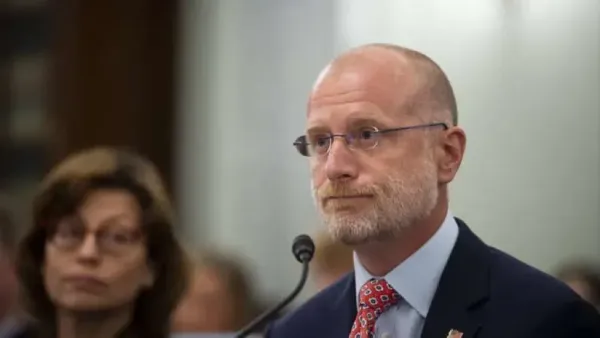Lack of ‘Rip and Replace’ Money, NCTA Rejects Speed Tests for Mapping, FBA Reports Lots of Fiber in 2022
The FCC and industry have said there is a shortfall in rip and replace funding.
David B. McGarry

December 22, 2022 – The Telecommunications Industry Association on Wednesday panned Congress’s exclusion from the 2022 omnibus package of funding for the “Rip-and-Replace” program, which helps operators refit networks compromised by risky foreign equipment.
“While we applaud both parties for coming together to negotiate the 2023 Consolidated Appropriations Act, TIA was stunned to see that this package does not include the remaining $3.08 billion required for the Trusted Communications Networks Reimbursement Program,” said a statement from TIA CEO David Stehlin.
“Rip and Replace” is a reimbursement program instated by Congress in 2020 to facilitate the removal of foreign-made communications technology – e.g., products from Chinese tech firms Huawei and ZTE – deemed to threaten American national security. Many, however, including the Federal Communications Commission, which oversees the program, have noted that the program is underfunded.
“This program – to replace public network equipment from Chinese vendors who pose national security risks – has long had bipartisan support since it was initially created in 2019 and partially funded in 2020,” Stehlin said.
According to an FCC letter sent in July, the agency’s current funding amounts to only 39 percent of total costs. An ex parte letter dated Friday by the Rural Wireless Association urged the commission to ask Congress for further funding.
“It is urgent that Congress act now to fully fund this national security priority. We look forward to working with the 118th Congress to address this critical issue with the urgency it is due and to make measurable progress to ensure the security and resilience of America’s public networks,” Stehlin continued.
NCTA says ‘no’ to speed tests
In a letter to the FCC dated Tuesday, trade group NCTA – The Internet & Television Association rejected calls for the agency to more heavily weigh speed test data for the purposes of broadband mapping.
The data in the FCC’s new national broadband map, published in November, may be challenged by the public. Submitted speed test data, however, are not categorized as formal challenges and are less seriously considered than challenge data, FCC officials have said.
NCTA wrote that speed test data are unreliable, arguing that they are easily affected by unknown equipment and network conditions. The trade association also argued that a speed test taker’s internet plan could provide misleading test results.
“For example, if a fixed wireless provider offers 100/20 service and reports that level to the Commission, the fact that a customer purchasing the 25/3 tier submits speed tests showing speeds slower than 25/3 in no way proves that the provider has misreported the availability of 100/20 service,” the letter said.
The letter noted that the FCC instructed providers to report the best service level at each location that could be made available within 10 days at no additional deployment-related cost to the consumer.
FBA report finds record fiber deployments in 2022
The Fiber Broadband Association’s 2022 Fiber Provider Report found that fiber providers passed almost eight million new homes in 2022, an unprecedented 13 percent annual uptick, the trade association said Wednesday.
There are 68 million fiber passings nationwide, or 63 million unique homes passed, the FBA said. The organization noted that 2022 fiber deployments proceeded despite supply chain and workforce challenges. The report was generated in partnership with RVA LLC Market Research & Consulting.
“Fiber broadband exceeds all other types of delivery in every single measurement of broadband quality, including speeds, uptime, latency, jitter, and power consumption,” said Gary Bolton, FBA’s president and CEO. “For the consumer this has real-world impacts, like more productivity, better access to health care and education, more entrepreneurism, and the option of more rural living. For society, this means more sustainability and, ultimately, digital equity.”










Member discussion